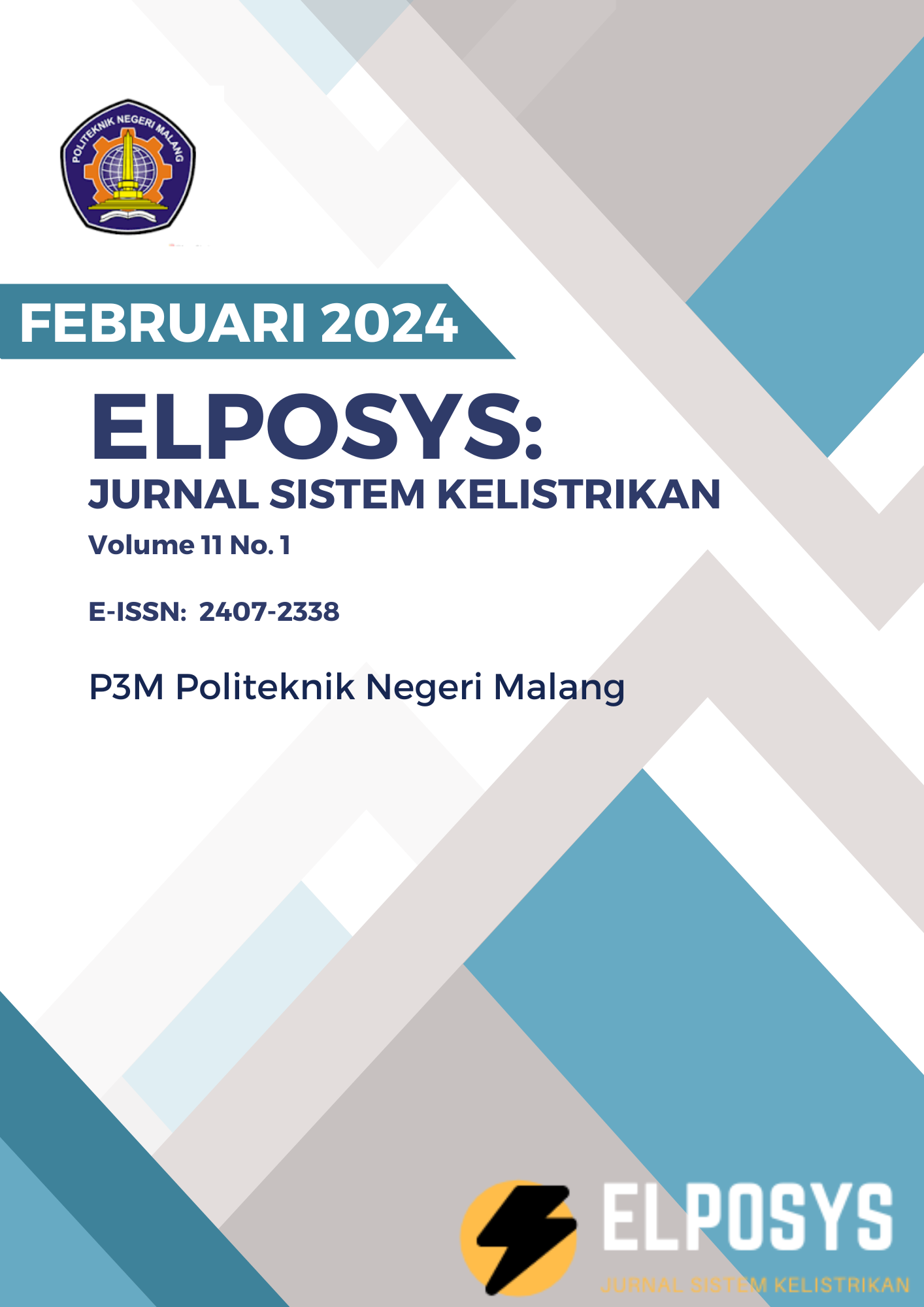Implementasi Load Cell sebagai komponen Alat Rehabilitasi Disfungsi Sendi Lutut
DOI:
https://doi.org/10.33795/elposys.v11i1.4625Abstract
Knee joint fractures caused after surgery or other activities that cause knee dysfunction require a rehabilitation process. Knee dysfunction means the knee joint cannot be bent/moved at the desired angle. Because the function of the knee is so important in relation to human activities, it is necessary to immediately carry out rehabilitation measures for a perfect return. Rehabilitation in this case can be done with weight training. In this research, loading for rehabilitation will be designed using load cell-based electronic engineering for the desired load, because the equipment used so far works manually.The research began with inventorying component requirements, designing the circuit, compiling a process algorithm, functional testing, calibration and data collection. The research data is a function of weight on movement, in this case motorbikes. The output of the research is a control circuit prototype to regulate load-based motor movement.The equipment specifications are produced with a loading capacity limit of 5 kg with a change step of 250 grams.
References
S. Suwito, S. Suhanto, and K. Kustori, “Sistem Baterai Charging pada Solar Energy System dengan Buck Boost Converter untuk Berbagai Tingkat Pencahayaan Di Bandar Udara,” APPROACH: Jurnal Teknologi Penerbangan, vol. 1, no. 1, pp. 39–48, 2017.
E. S. Ningrum, “Penerapan Teknologi Wireless RF Dan SMS Gateway pada Sistem Monitoring Pemakaian Air PDAM Skala Rumah Tangga yang Terintegrasi Database via Internet,” in Industrial Electronic Seminar, 2010.
I. N. W. Satiawan and I. B. F. Citarsa, “Desain Buck Converter Untuk Charging Batere Pada Beban Bervariasi,” Dielektrika, vol. 5, no. 1, pp. 30–35, 2018.
M. Otong and R. M. Bajuri, “Maximum power point tracking (MPPT) pada sistem pembangkit listrik tenaga angin menggunakan buck-boost converter,” Setrum: Sistem Kendali-Tenaga-Elektronika-Telekomunikasi-Komputer, vol. 5, no. 2, pp. 103–110, 2017.
D. Hakim, A. Budijanto, and B. Widjanarko, “Sistem Monitoring Penggunaan Air PDAM pada Rumah Tangga Menggunakan Mikrokontroler NODEMCU Berbasis Smartphone ANDROID,” Jurnal IPTEK, vol. 22, pp. 9–18, Feb. 2019, doi: 10.31284/j.iptek.2018.v22i2.259.
R. Risna and H. A. Pradana, “Rancang Bangun Aplikasi Monitoring Penggunaan Air PDAM Berbasis Mikrokontroler Arduino Uno,” Jurnal Sisfokom, vol. 3, no. 1, pp. 60–66, 2014, doi: 10.32736/sisfokom.v3i1.212.
Agus Sukoco Heru Sumarno, IMPLEMENTASI MOTOR WIPER UNTUK PENGGERAK SANDARAN DISABILITAS TULANG BELAKANG. Penelitian DIPA Nomor:SP_DIPA-023.04.576811/2014 tanggal 5 Desember 2013 Politeknik Negeri Malang
J. Reyes and N. Sobejana, “Development of Egg Classifier Using Pixy Camera and Load Cell,” Available at SSRN 3717478, 2020.
A. Çoban and N. Çoban, “Determining of the spring constant using Arduino,” Physics Education, vol. 55, no. 6, p. 065028, 2020.
K. v Kaul, S. Patel, D. Bhanderi, P. Mistry, A. Shah, and K. Patel, “Real-time Load Monitoring and Estimation of Waterline in Boat using Load Cell Assembly and Ultrasonic Sensor.,” Grenze International Journal of Engineering & Technology (GIJET), vol. 8, no. 1, 2022.
D. Origines Jr, “Load Cell and Arduino Technology as Lemon Fruit Classifier,” Available at SSRN 3793375, 2021.
A. R. Widya, E. Yuliyanto, A. Amali, S. Sugeng, A. Agung, and W. Wiyanto, “Metrological design and analysis of rice dispenser based on arduino uno with load cell sensor with solar cell,” in AIP Conference Proceedings, AIP Publishing, 2023.
K. P. K. Riyanti, I. Kakaravada, and A. A. Ahmed, “An Automatic Load Detector Design to Determine the Strength of Pedestrian Bridges Using Load Cell Sensor Based on Arduino,” Indonesian Journal of Electronics, Electromedical Engineering, and Medical Informatics, vol. 4, no. 1, pp. 15–22, 2022.
M. N. Mansor, N. A. A. Talib, S. A. Saidi, W. A. Mustafa, and N. F. Zamri, “Arduino IOT Based Inventory Management System Using Load Cell and NodeMCU,” Journal of Advanced Research in Applied Sciences and Engineering Technology, vol. 32, no. 3, pp. 12–25, 2023.
V. T. O. Silva, R. N. de Medeiros Jr, W. O. Silva, and S. R. R. Medeiros, “Using an Arduino microcontroller to build a Planetary Scale for study of weight force,” Physics Education, vol. 55, no. 4, p. 045016, 2020.
Downloads
Published
How to Cite
Issue
Section
License
Copyright (c) 2024 Elposys: Jurnal Sistem Kelistrikan

This work is licensed under a Creative Commons Attribution-NonCommercial 4.0 International License.








